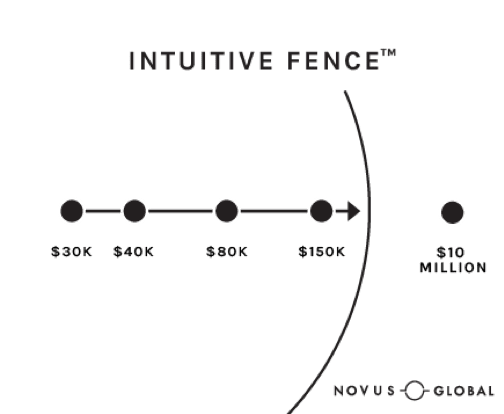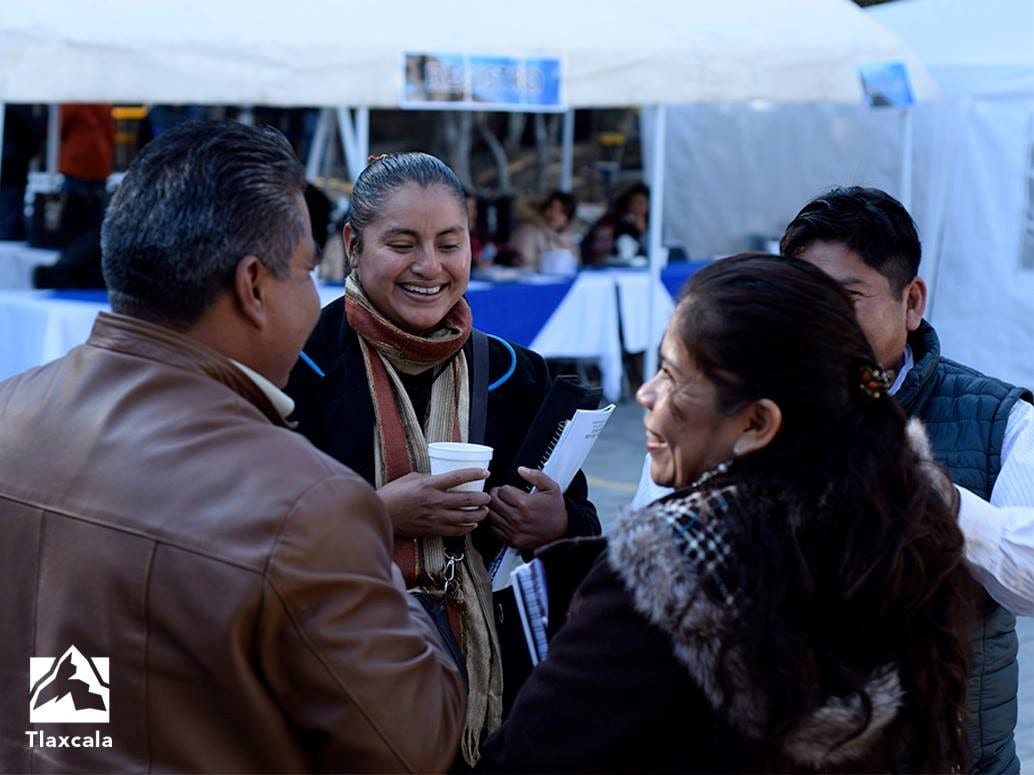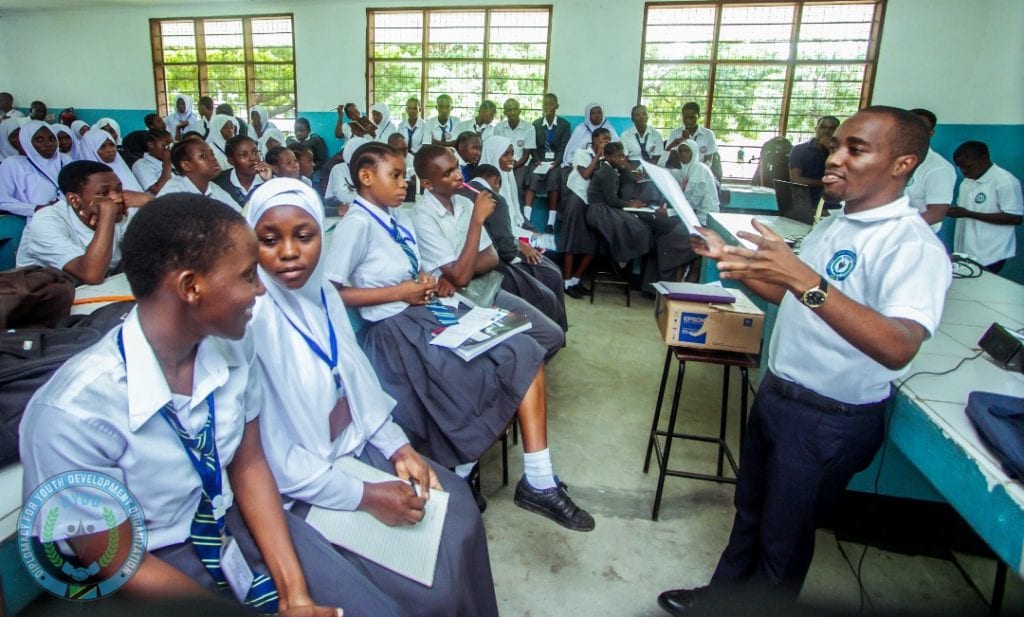
At Novus Global, we believe every leader has the same top two leadership challenges.
It’s not budget.
It’s not time.
It’s not the market or lack of interest of the people we’re trying to lead.
Here are every leader’s top two leadership challenges with no exceptions:
1. Every leader drastically underestimates what they’re capable of.
2. Every leader drastically underestimates what their team is capable of.
We use this as a litmus test for whether or not we’re a good fit for a client or company. If they resonate with the statements above, we can create magic together. If they disagree, we’re probably not a good fit for them.
This article is all about how to overcome these two leadership challenges.
In order to get there, you’ll need to understand a concept we use at Novus Global called an Intuitive Fence.™

Think of an Intuitive Fence as a circle. Inside the circle are things you think are possible. Outside the circle are things you think are impossible. The closer you are to the center of the circle, the more possible things seem to you. The closer you get to the edge of the circle—the fence—the less possible things seem to you. And if you cross the fence—move from the inside the circle to outside the circle—things occur to you as not possible. And that’s your Intuitive Fence.
This is how your Intuitive Fence plays out in the real world: let’s take how much you think you’re going to make this year.
Let’s pretend making $30,000 a year for you is way inside the intuitive fence. (It’s totally possible for you—maybe you’re doing that right now.) As that number goes up ($40,000; $80,000, etc.) it becomes less possible until you get to the edge of your fence (say, $150,000 a year). If I were to ask most people reading this, “Will you make $10 million dollars this year?” not only will most of us say, “No” but we’ll say, “That’s not even realistic for me.” Which is another way of saying, “That’s not possible for me.” That’s because the idea of making $10 million in the next year exists outside our Intuitive Fence. See how that works?

The problem is that most of us think our Intuitive Fence is a fact. Have you ever tried to convince someone that something they thought was unrealistic was actually possible? Usually when we try to do this, people get defensive, argumentative and do what they can to convince you you’re wrong. Even if you know for a fact they could do it. They’ll still argue with you.
It’s incredibly frustrating.
Of course, we shouldn’t be too hard on them, because most of the time we’re exactly the same way. Have you ever had someone try to tell you that something you were convinced is impossible is actually possible? How dare they! They don’t know your specific situation! They don’t know what you know. That’s easy for them to say!
We have all this evidence about why they’re wrong and why we’re right. We think it’s based on evidence. Facts. Truth.
(I’ll give you a hint: it almost never is.)
Our Intuitive Fences aren’t usually rooted in fact. They’re not “Fact Fences;” they’re “Intuitive Fences.” This means they’re rooted in intuition. And our intuition is powerfully shaped by emotion. Specifically: the desire to be right mixed with the desire to be comfortable.
Have you ever tried to convince someone that something they thought was unrealistic was actually possible?
On Being Wrong and Comfortable
What does it feel like to be wrong? We love asking this question during our trainings with companies. People give answers that usually sound like this: embarrassed, ashamed, bad or sometimes excited, humbling, maybe an opportunity to grow, etc.
But that’s not how you feel when you’re wrong. That’s how you feel when you realize that you’re wrong. How do you feel when you’re wrong, but you haven’t realized it yet?
It feels exactly like being right. Being wrong feels like being right, until of course you realize that you’re wrong. In order to expand our Intuitive Fences, we need to develop a humble curiosity around our perceptions of ourselves, our teams and the world around us, especially when it comes to our capabilities.
The same is true for comfort. The smaller our Intuitive Fences are, the more comfortable we’re allowed to be. Put another way: the less we’re capable of, the less we need to try. The less we’re capable of, the less people expect from us.

So, people tend to enjoy having smaller Intuitive Fences because it’s more comfortable and then they love to be right about it. In order to expand our Intuitive Fences, we have to become comfortable with being intentionally uncomfortable.
This is the reality of leadership: the smaller the Intuitive Fences are for people, the harder it is to lead them. And if a leader has a smaller Intuitive Fence than the people following her, the followers will leave or cause problems.
The goal then for any leader is to identify and challenge and grow their own Intuitive Fence and to create cultures where people not only challenge and grow their own fences but actually want their leaders to challenge their fences.
Have you ever had someone try to tell you that something you were convinced is impossible is actually possible?
The Intuitive Fence and Your Vision
So ,what does this have to do about the future?
Well, with rare exception, people tend to live into futures that they only think are possible. Put another way: people tend to live into futures that can only fit inside their Intuitive Fence. Most people’s visions for their future are inside their Intuitive Fence.
This is why the spiritual activist, Paul of Tarsus, wrote in his letter to people in Ephesus 2,000 years ago that The Divine is able to do more than we can “ask or imagine” (Ephesians 3:20). What Paul was saying is that The Divine lives outside our Intuitive Fence, and to connect to The Divine in a significant way is to have our Intuitive Fences expanded.
The bigger your Intuitive Fence gets, the more you’ll expect from yourself and those around you. And the more you expect from the future and yourself, the more you’ll rally to create it.
The more you assume you’re capable of, they more likely you are to try and excavate that capability. The more you assume your team is capable of, the more likely you are to try and lead your team to unprecedented heights.
How Big is Your Intuitive Fence?
So, let us ask you: how big is your Intuitive Fence? How big is your team’s? What are you currently doing to expand your own fence and how are you helping your team expand their own fences?
As teams begin to collectively grow their Intuitive Fences, they will instinctively create better futures. And the future you anticipate will not only grow, but more will be worthier of your pursuit and more likely to happen.










 Because of the Summit, I started pursuing my vision by observing challenges and problems that affect the youth in Tanzanian society—they have little to no knowledge on foreign policy or how to address unemployment issues. The reality is that youth in Tanzania comprise 65% of the national workforce, therefore, engagement and integration of youth in our foreign policy is of great importance in order for them to engage on various issues.
Because of the Summit, I started pursuing my vision by observing challenges and problems that affect the youth in Tanzanian society—they have little to no knowledge on foreign policy or how to address unemployment issues. The reality is that youth in Tanzania comprise 65% of the national workforce, therefore, engagement and integration of youth in our foreign policy is of great importance in order for them to engage on various issues.





Recent Comments